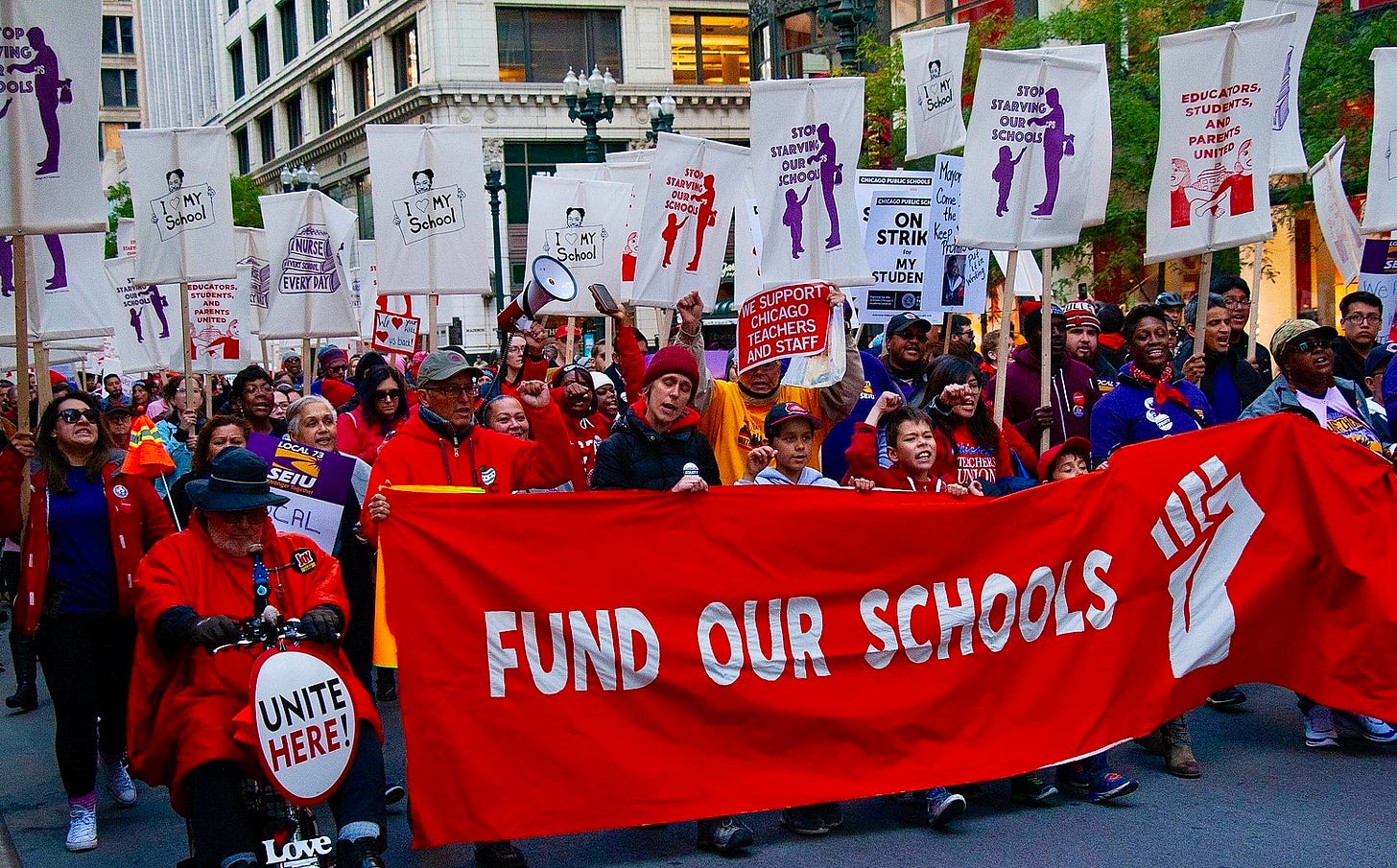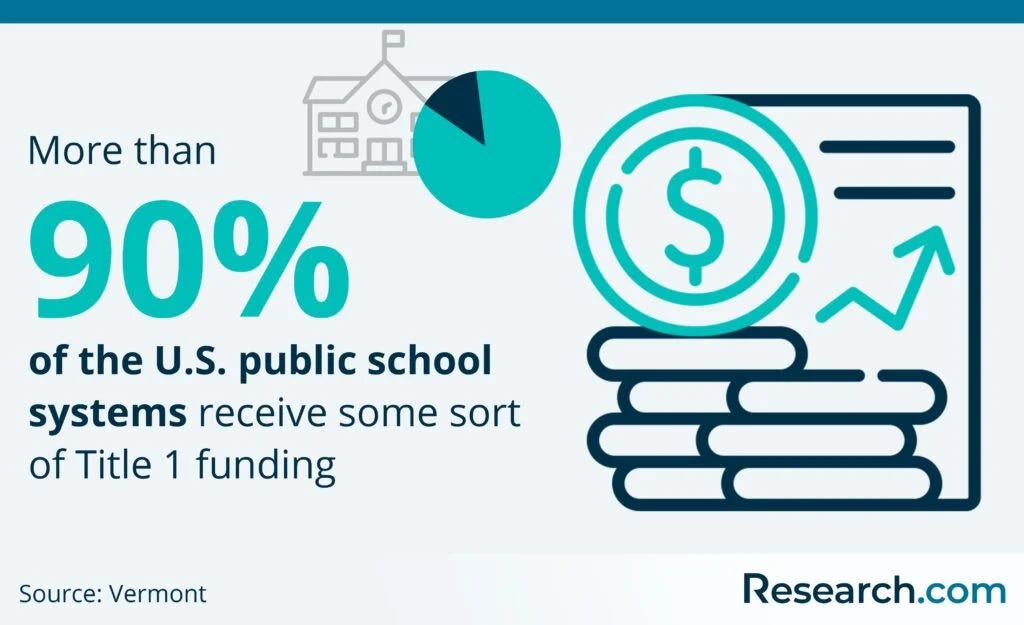The Attack On Academia Starts In Public School.
Donald Trump And Republicans Are Reigniting The Fight Against Public Education.
The attack on public education is nothing new. The idea of public education has been around since near America’s inception. Along the way things were passed and created to ensure an equal baseline of opportunity for all.
The desegregation of public schools, and the creation of the Department of Education (DOE) in 1979 marked major steps forward for this goal. Which is why the DOE has been the main target for conservatives hoping to pull from public education and funding to give more profit to private schools.
This has been brought back into the conversation after Donald Trump’s election victory, where he is now having closed-door conversations about the possibility of ending the DOE altogether.
So I figured now is good as time as any to rundown the benefits we see from public education, and the ways the DOE strengthens that.
How The Department Of Education Helps.
Contrary to popular belief, the DOE does not set curriculum for what is to be taught in schools. This is already mostly handled at the state-level. Instead, the DOE handles mainly funding duties for loans and grants.
With most of these being centered around raising the baseline of educational quality for all to an equal level.
The department receives well over $18 billion dollars just for Title 1 funding. This is funding that specifically targets low-income and impoverished areas to help improve their schools. From better equipment, new programs, more staff, it directs the funding to schools who opt-in on an as need basis.
These schools have seen increased high school graduation, better testing scores, higher economic output from graduates as adults, and overall reduced poverty rates.
Title 1 also requires at least a portion of funding go towards engaging parents into the kids education, which is also tracked to better educational outcomes in the long run.
Another major function of the DOE is the Individuals with Disabilities Education Act or IDEA. DOE allocates over $15 billion dollars to this program targeted at helping districts serve students with special education needs.
This is something that without many public schools lack as the equipment and training can be very expensive, which is also why most private schools just choose not to offer them.
Some of these services include but are not limited to the following:
speech-language pathology and audiology services;
interpreting services for children who are deaf, hard of hearing, or deaf-blind;
psychological services;
physical therapy and occupational therapy;
recreation, including therapeutic recreation;
social work services in schools;
school health services and school nurse services;
counseling services, including rehabilitation counseling;
orientation and mobility services provided to blind or visually impaired children;
parent counseling and training;
medical services for diagnostic and evaluation purposes only; and
early identification and assessment of disabilities through the implementation of a formal plan for identifying a disability
From 2012-2022 alone IDEA helped raise the percent of children with disabilities who were able to attend general classes 80% of the day to nearly 70%.
The largest make-up of what the Department of Education does is handle student loans and helping financials for those applying to college. One example of this is the Free Application for Federal Student Aid or FAFSA.
Over 17 million aspiring or even current college students fill out the FAFSA each year in hopes to qualify for student loans, grants and other additional aid. For many, it's the only way they could expect to afford paying for college.
These include things like Pell Grants, which are given to low or middle income families. With many others targeted at low-income or first generation college students to help get them over that hump.
This has downstream effects that helps everyone in society, as it allows a ladder up for those in lower tax brackets to gain an education and begin earning more. Which allows them to pay more into the system and put more money back into the economy, creating more wealth, jobs, and opportunity for everyone.
Two more menial but still very important duties of the DOE are to collect data from and to report on schools nationwide. This allows both easy accesses for students and parents to track information about various schools, student performance, and more.
It also allows for tracking of school and curriculum performance, especially in comparison to poverty rates, which allows educators to take in this information and respond accordingly to ensure the best teaching practices.
The Department of Education is the backbone of public schools that allows for the baseline of quality in education to meet an equal standard for all kids. Ensuring no one is left behind because of income or disability, race or gender.
Why Public School Matters.
Public school matters to ensure nobody is being priced out of education. The issue with private school is, like with most things where profit is the motivating factor, it will always been skewed toward the wealthy and provide disproportionate benefit to them because of this.
This only continues to cycle of the wealthy being better educated, getting the better jobs, and hoarding the lion share of the money rather than enabling opportunity for others. Even with school vouchers, we see they typically do not cover the full costs for the best schools.
Meaning switching to school choice would just recycle the issue with the poorest students receiving less quality care, only there would be no regulation or public funding to ensure those special needs children or especially impoverished families aren’t being left behind.
This is borne out in the data as well. When controlling for socioeconomic factors, kids score the same in both public schools and private school.
Meaning those low-income students aren’t magically performing better because their school makes profit, but the overall testing of these schools are being artificially boosted by the fact they’re disproportionately made up of wealthier students.
Why do they perform better? More money is more access to resources and extracurricular activities that can aid in higher learning development.
Who assures lower and middle-income families have access to these same resources? The Department of Education does, through funding public schools.
The only issue with this is lack of funding, which is ironically because most funding is done on the state and local level, rather than where you’d be led to believe its almost entirely from the Department of Education at the federal level.
Schools are funded primarily through property taxes, which the issue with becomes pretty evident pretty fast. Poorer neighborhoods, with lower valued homes, will always have less funding for their schools than wealthier neighborhood.
This is why the Title 1 funding was created, but with a budget under $80 billion the Education Department can only help so much. In perspective, this is one-third the size of our current military budget.
Thus the answer becomes clear. There is a pot of money meant to be spread out across a population to do a very pivotal job, however, the money runs out before everyone gets covered.
The answer is clearly everyone adds a little more money to the pot, the pot then can cover everyone, and as a result everyone gets more money back downstream. As again, a more educated society, leads to a higher-skilled society that can procure better wages and produce at higher levels. Leading to more money and opportunity for everyone.
What Donald Trump and Republicans want to convince you the answer is however, is instead of adding more money to the pot, add more pots to spread the money across. As seeing the profit potential, many charlatans will open private schools, but none of this provides more funding.
This leads to the natural cycle of the poor quality ones falling down the list and lower in price, and the good quality ones going up the list and raising in price. Meaning only the wealthiest can afford the best, and the poorest will still be stuck with the worst.
But unlike in public school, the student will be on their own without help acquiring beneficial resources to aid in the learning process.
The federal government isn’t providing your laptop anymore, the CEO of your school isn’t cutting into his profit to do it either, so you better hope your parents can come out of pocket more than they already are to keep you in the school.








